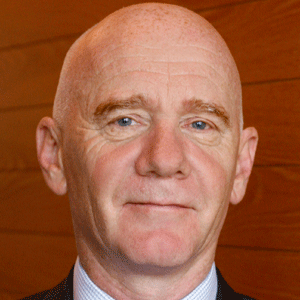THANK YOU FOR SUBSCRIBING
Editor's Pick (1 - 4 of 8)

How Technology is Transforming Credit & Collections
Darin Ball, Director of Credit, Veritiv Corporation


Darin Ball, Director of Credit, Veritiv Corporation
Because of the markets we serve, we encounter varying degrees of complexity in managing our receivables. We’ve benefited from emerging technologies via enhancements through our ERP system to automatically match more payments, implemented collection tools to prioritize our collection efforts, enabled automated credit scoring with direct feeds from our credit score providers, and more. These changes have made us more effective and efficient with our internal processes.
But our greatest challenges have been centered on external technological advancements, particularly for our collections functions. As more of our customers implement newer technology solutions and find more efficient ways to manage their A/P, this has created new challenges for our collectors. What we learned from this journey is that the needed skill sets for a collector to keep up with the changing technologies is evolving more rapidly than the workforce. We recognized that these challenges were ushering in a new breed of collector who has a broader skill set than a traditional collector. We addressed this challenge by building a new segment of our workforce with individuals with little collections experience and more technical skill set not traditionally viewed as critical for collectors, like advanced excel, project management, 6Sigma, forensic accounting, and above-average collaboration skills. These skills are more effective when trying to get to the root cause of an issue, or when needing to pull cross-functional teams together, or when organizing a group of people to start a project for resolving the most complex process and technology challenges.
This has also been felt in our underwriting efforts, as companies employee “cloaking” strategies (a term coined by Dunn & Bradstreet) in which a company actively manage their finances in a way that the true nature of their financial condition is not visible through the more traditional credit metrics such as timeliness of payments to suppliers. This ‘self-awareness’ has forced companies like Veritiv to rely on more robust analytics to identify new indices of risk.
Similarly, with customer payments, we are seeing fewer checks and more adoption of electronic payments. The US is significantly behind Europe with regard to the shift to electronic payments, but we are beginning to catch up. While receiving funds electronically eliminates the oldest excuse in the book (“the check is in the mail”), receiving payments electronically comes with its own set of challenges. For Veritiv, receiving those funds with the accompanying remittance detail is the biggest of those challenges. Electronic payments, unless submitted with a consistent format (such as CTX), are generally less automated in the application than checks, resulting in a need for more manual work. Fortunately, there are new and wonderful technological solutions for this challenge as well.
As a result of implementing new technology solutions, and evolving our processes, approach, and team members to be more adaptive to the rapidly advancing technologies, we’ve been able to achieve a lower DSO, a higher percentage of current receivables, improved portfolio health, and reduced bad debt. And in doing all of that, the bigger prize is a better customer experience.
By Implementing New Technology Solutions, And Evolving Processes, Approach, It Is Possible To Achieve a Lower DSO, A Higher Percentage of Current Receivables, Improve Portfolio Health, and Reduce Bad Debt
Weekly Brief
I agree We use cookies on this website to enhance your user experience. By clicking any link on this page you are giving your consent for us to set cookies. More info
Read Also













